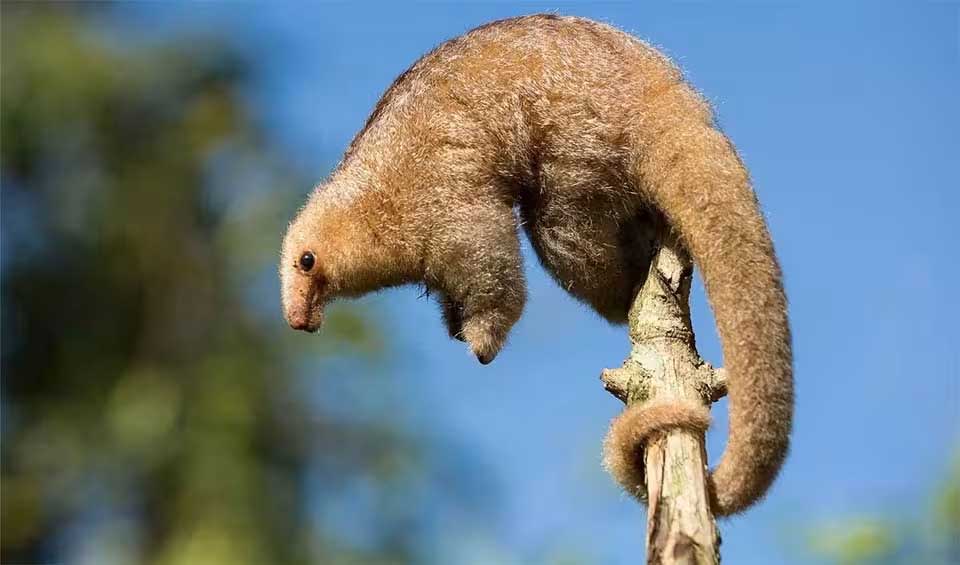Cyclopes – Silky Anteater
Also known as pygmy anteaters, they are the smallest and most adorable of their insect-eating kind
Despite their diminutive size, with adults typically reaching lengths of around 20 centimeters and weighing less than a pound, silky anteaters possess a unique set of characteristics that set them apart from other mammals.
One of the most striking features of silky anteaters is their luxurious fur, which gives them their name. Their dense, silky coat is a marvel of evolution, providing insulation and protection from the elements while also serving as camouflage in their arboreal habitats. Their fur can range in color from pale beige to a rich golden hue, blending seamlessly with the dappled sunlight filtering through the forest canopy.
Silky anteaters are predominantly nocturnal creatures, venturing out under the cover of darkness to forage for their primary food source—insects. Despite their small size, they possess remarkably long tongues, which they use to probe into crevices and extract ants, termites, and other small invertebrates from tree bark and foliage.
These fascinating creatures are distributed widely throughout tropical America, inhabiting a variety of habitats, including secondary-growth woodlands, humid rainforests, and mangrove swamps. Their preference for dense vegetation and tall trees makes them particularly well-suited to life in the treetops, where they spend the majority of their time foraging and resting.
Despite their elusive nature, silky anteaters face relatively few threats to their long-term survival in the wild. However, they are occasionally targeted by poachers for the exotic pet trade, with some individuals being captured and kept as pets in certain regions. Unfortunately, silky anteaters do not fare well in captivity, as they have specialized dietary and environmental requirements that are difficult to replicate in a domestic setting. As a result, individuals kept as pets often suffer from stress, malnutrition, and other health issues, leading to shortened lifespans and diminished quality of life.
Species in this genus
Silky anteater
Also known as pygmy anteater, they are the smallest and most adorable of their insect-eating kind

